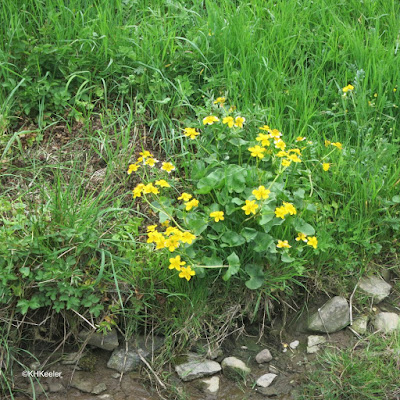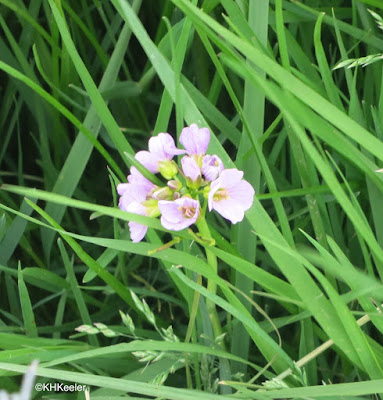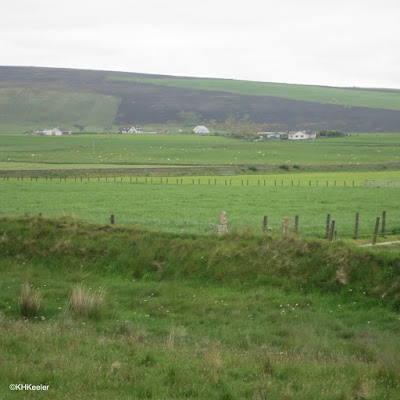Sometimes the places I go are imbued with romance from my childhood. Ah, Orkney! In the King Arthur tales of my childhood, Sir Gareth of Orkney was my favorite. (Cliffnotes) Many places associated with King Arthur are in southern England, for example Cornwall, so I never grasped how far Gareth traveled to serve with King Arthur.
The Orkney Islands are in northernmost Scotland, just north of the Scottish highlands, but separate, being a group of 67 islands, of which 17 are inhabited. They are strikingly beautiful.
They have been inhabited a long time. Neolithic sites abound, for example the Ring of Brodgar, below, from about 3000 BC. An unfinished ring of stones of different ages, why the stones were hauled there and carefully erected is unknown. (More information)
 |
| Ring of Brodgar |
 |
| Skara Brae |
 |
| Maeshowe seen across the fields |
Orkney was green with spring when I was there. The most common flower was the marsh marigold, Caltha palustris, a member of the buttercup family, Ranunculaceae. The ubiquitous sheep don't like marsh marigolds, allowing the plants to prosper.
 |
| marsh marigold, Caltha palustris (buttercup family, Ranunculaceae) |
 |
| Cuckoo flower, Cardamine pratensis (mustard family, Brassicaceae) |
The thistle is the emblem of Scotland, so seeing them was great. The explanation for a country choosing a thistle for its emblem is that attackers, crossing to a Scots settlement, walked barefoot on the thistles around the village and despite themselves, warned the people. The Scots appreciated the thistle warning and adopted it as their symbol. No one is quite sure which thistle it was and you can read several versions of the story (I think, unlike some sources online, that the raiders were Norsemen, vikings, because they typically sailed barefoot. My discussion: link). Here is photographic evidence that walking barefoot across Orkney would still be painful.
Below, a yellow mustard (mustard family, Brassicaceae) in flower. It could be a weedy field of oilseed rape (Brassica napus) but northern Europe has easily 15 species of yellow-flowered plants in the mustard family, that are not easy to tell apart. So this is an unidentified yellow mustard. But isn't it pretty!
Very romantic, Orkney, even to grown-ups.
Related posts: wild Shetland link
Prehistoric Sheltland link
Faroe Islands link
Comments and corrections welcome.
Kathy Keeler, A Wandering Botanist
More at awanderingbotanist.com








No comments:
Post a Comment